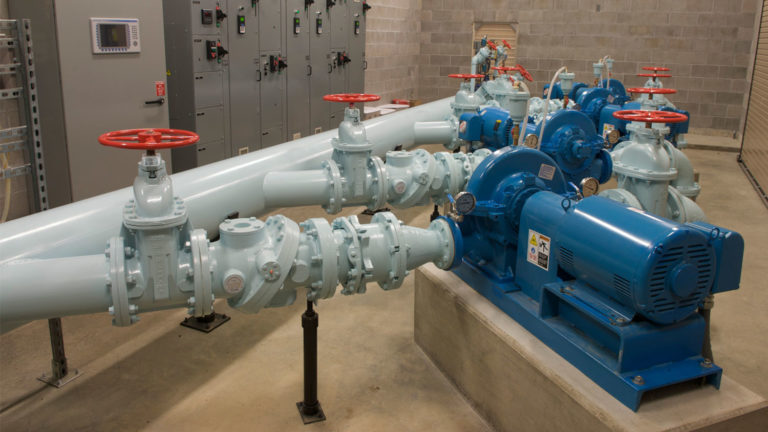Part 2: Q&A on maintenance planning and scheduling
Suzane Greeman, president and principal asset management advisor of Greeman Asset Management, discussed in a recent webinar 6 steps to establish an effective maintenance planning and scheduling process. During the webinar, several attendees submitted questions, and Part 2 of Greeman’s answers focus on work management. Part 1 can be found here.
Planning and scheduling need a good work management system. Work management includes work orders; work requests/work order workflows; and the work planning cycle.
Part 2 of Q&A: Work Management
Do you allow for a percentage of “no problem found”?
Greeman: No, that has abuse written all over it—we know our people will click “no problem found,” miscellaneous or anything else to close out the work order. If the asset operates outside of its defined function, it has failed, and there is a problem. This is also the same reason that I don’t allow “miscellaneous.” And for that matter, I require people to go deeper into anything identified as “electrical.” I always think about what the information would look like in 6 months or a year when we want to analyze data and no one has a personal recollection of the failure. I will not know what “no problem found” is in 12 months. But if you have failure codes defined in domains (pre-defined lists) that folks can select from, rather than free-type, this will increase your chances of getting meaningful data that can be analyzed in the future.
What is the reason for not using the full burden rate for capturing labor costs for internal use of resources?
Greeman: There is no problem in using the fully loaded costs. In fact, if your organization sells maintenance as a service (profit center), you must use the fully loaded costs and probably already are using it to pass the full costs through to the client. If, however, maintenance is a cost center within the organization, then your reason for using labor costs is to calculate maintenance costs and asset costs as KPIs to be used for decision-making. In this case, the trend in the numbers means more than the absolute numbers to the cents. You need to look for how maintenance costs are changing over time compared with the asset replacement value (ARV) to get a gauge of whether maintenance is economically feasible or at least to know the point in time when it becomes unfeasible.
So, the answer is that you can use the loaded cost—there is no reason to not use it. It is a question of whether you need to and whether you can access and maintain the information to use it. The obstacles that I have encountered in using the fully loaded costs are as follows:
-
- This number must come from HR/payroll. Will they have any ethical or other reasons disclosing it and putting it in a public place (what the CMMS is)?
- If there is no problem publishing the data, will HR/payroll have the processes in place to continually provide you with updated information?
- When the labor rate changes by collective bargaining or otherwise, it must immediately be updated. The company cannot risk any discrepancies as it could become the point of future discussion. This is administratively burdensome, and it must be established who will do this. Otherwise, it will get dumped on the planner. From an asset information perspective, it should be decided who owns the data. This data is owned by HR, so HR could then arrange with IT to do a data dump and update the system. In most companies that I have worked in, the likely answer would be, “the man who has raw meat should seek fire,” which means the planner.
My way around it has been to use averages of the published rate in the agreement to derive labor costs in the CMMS and do budgets because I am normally in companies where maintenance is a cost center, and I am using maintenance costs as a KPI not as absolute numbers. However, if you have business processes that can overcome these obstacles, you can use it. It is most important that everyone in the organization be in agreement with what the numbers mean.
Many plants track work order backlog, however, I have been pushing Production Loss Pareto’s of associated work orders rather than backlog. What is your view?
Greeman: The maintenance work backlog, also called the rolling 90-day list, is the list of work that has been requested but not yet executed. The planner maintains this list (in the CMMS printed as a report) to plan from weekly. A great practice is to have this divided up into areas and sent to the area production/operations folks weekly to determine their priorities at the start of the planning cycle. This prioritized list is part of the overall work that the planner takes to the pre-planning meeting to start the planning process.
Backlog is also a source of work for shutdown preparation. By production loss Pareto, I assume that you are referring to a defect elimination process in which you are identifying the 20 percent of assets (bad actors) that are causing 80 percent of the production downtime by cost (I also do it by time as well to identify the nuisance failures that kept us busy even if they are not the most expensive). These lists are usually used by reliability engineers and maintenance managers to develop solutions to repeated failures. Both are valuable tools, but they serve different purposes. One is a work planning tool, and the other is a failure management tool—both are useful and needed.
What tips would you have about where to start?
Greeman: I would start by implementing a planning cycle. This should be led by the maintenance manager and requires the cooperation of production and operations/plant management. They need to be on board because all planning starts (or stops) with them. This planning cycle should include a regular planning meeting and a maintenance plan. This is a good place to start because it requires the other elements that we discussed to be developed and forces the conversation.
Don’t look for perfection and start to measure performance of the plan too early. Use it as a tool to initiate maintenance strategy improvements and get the planning cycle stabilized first. If the operation is dynamic, this may happen weekly. Look again at the six areas I discussed in the webinar, because, the organization needs to have a long-term plan to improve in all six areas, including the use of the CMMS. By taking a strategic approach, you will begin to see measurable reduction in reactive work and a more cost-effective deployment of maintenance work through improved decision-making.
What is the best practice for developing your own maintenance planning schedule?
Greeman: To develop the planning cycle, I would recommend a multi-stakeholder (team) approach. It could look something like this:
-
- Identify main stakeholders—usually production or operations. Some companies are divided into process departments so each process department would have one.
- Decide what the team wants the plan to look like, what should be included and then also work with your CMMS analyst to automate as much of it as possible.
- Establish when the week will start and when it will end. In the companies that I have worked in, it was advantageous to have the week start on a Saturday so that when the plan is released for the week on a Thursday, it includes the plan for the weekend.
- Start with the day that you want the plan to be released to the company, and work your way back. This will tell you what each stakeholder needs to be doing each day leading up to the release of the plan. You will realize how much work and information goes into creating the plan, which means some level of pre-planning will be required. The planning cycle needs to accommodate that pre-planning.
The lion’s share of our PMs are generated “from date completed,” instead of on a set frequency. I have major problems with this in general (but have only been here 6 months) and with the risk it creates, but the SD frequency (and opportunity for equipment availability) at this site is on a pretty ragged cycle and based largely on equipment performance so it could be 3 weeks, or it could be 5 weeks between SDs. Do you have any advice on how best to approach this situation?
Greeman: You raise a good point as when it triggers from date of completion, you don’t have a frequency—at least not one that can be audited if you want to do a failure analysis. On the other hand, this protects you from over-maintenance by repeating work if you did the last PM late or had to do the equivalent work because you had a failure. What I have seen work well is when the PMs are on a set frequency and if they run into each other, cancel one with the relevant reasons noted. Let’s say that you have a pump on a monthly PM, but in week 3, you have a failure that caused you to do all the work on the monthly and more (as a corrective activity), you clearly don’t want to open it up the following week to repeat that work. In a case like that, I would cancel the PM due next week with a note that mentions the failure date and corrective work order number. In the notes on the corrective work order, I would mention that the work executed on this work order will lead to the cancellation of PM xxx.
From a maintenance strategy perspective, you should always be looking at the PMs to eliminate them either by predictive maintenance or straight elimination because they are unnecessary. A lot of PMs are unnecessary to begin with. Some were created at the beginning of the asset’s life cycle, some are from the OEM and never adapted to the current operating context, many were put in to appease management after a failure (to avoid doing a proper RCA), some will never PREVENT a single failure (feel good ones) no matter how much you do them, and some were never taken out even though predictive maintenance was implemented etc. Therefore, PMs always need to be looked at. When I do any kind of optimization, I tend to start with the most frequent ones that the maintenance staff (as opposed to operations/production) is required to do. Weekly(s) are my favorite.






